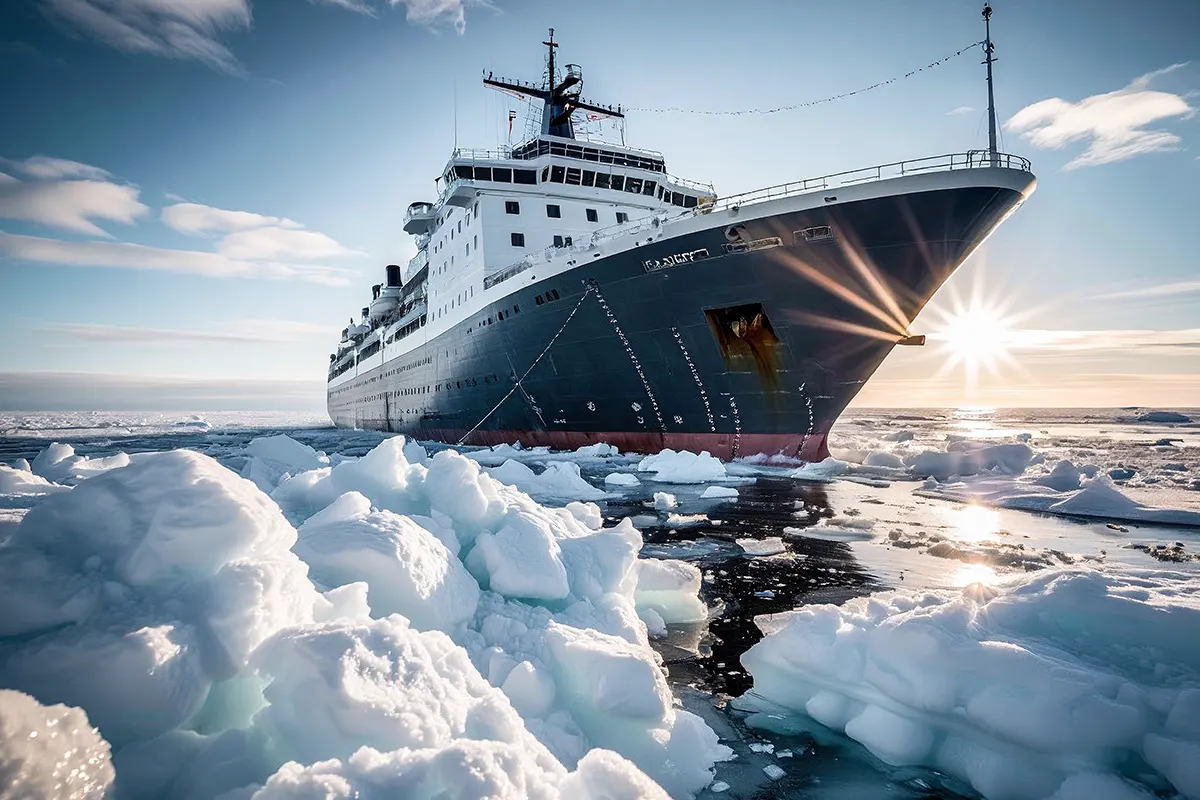The Northern Sea Route (NSR) is Russia’s principal Arctic transport artery and one of the most vital logistics corridors globally. It links the country’s European regions with the Far East, following the Arctic Ocean coast and considerably shortening cargo transit times between Europe and Asia versus traditional southern routes.
The Importance of Developing the NSR
- Strategic significance. The NSR ensures Russia’s transport independence, connects the northern and eastern regions of the country, and opens direct access to Asian and European markets, enhancing Russia’s role as a major international transit hub.
- Economic impact. The NSR is the main route for delivering raw materials and finished products from oil, gas, coal, non-ferrous metal deposits, and other resources, thereby supporting export growth and domestic trade.
- Arctic infrastructure development. NSR development drives active construction of ports, icebreaker and cargo fleets, and modernization of transport and energy facilities, thereby facilitating Arctic exploration and settlement.
- Geopolitical role. Control and utilization of the NSR enable Russia to proactively develop and safeguard its Arctic interests amid global changes and competition for Arctic resources.
Main NSR Ports and Their Roles
The NSR encompasses more than 70 ports and transshipment hubs. Key ports include:
- Murmansk — the largest ice-free port, the starting point of the route, and a powerful industrial and transport platform for Arctic shipping.
- Arkhangelsk — Russia’s oldest port, a critical center for exporting and supplying northern territories, and a hub for import-export and multimodal logistics.
- Dikson — a port on the Kara Sea coast, important for supporting Arctic expeditions, military facilities, and industrial enterprises.
- Dudinka — a transshipment base on the Yenisei River, a center for exporting non-ferrous metals and raw materials from Taymyr and the Norilsk industrial region.
- Igarka — a transshipment base for delivering equipment and materials to oil fields in Siberia.
- Tiksi — a key port on the Laptev Sea coast, supplying Yakutia and northeastern Russia, as well as supporting scientific and industrial projects within the Lena River basin.
- Pevek — Russia’s northernmost port, serving as a support center for gold mining and the supply of the northwestern part of Chukotka.
- Sabetta — a modern port built for liquefied natural gas shipments from the Yamal LNG project, driving the development of the entire Ob Bay and Yamal-Nenets Autonomous Okrug.
- Vladivostok and Petropavlovsk-Kamchatsky — large Far Eastern ports, serving as endpoints and transit points of the NSR.
- Naryan-Mar — the only year-round port in its region.
Each of these ports serves distinct functions: extraction, transshipment, supply to remote areas, regional transit, and resource export. Their development forms the basis of economic stability and expansion of Arctic infrastructure.
Navigation Features and Seasons on the NSR
Navigation in the Northern Sea Route waters depends heavily on ice conditions and weather:
- Summer-Autumn period. Traditionally, navigation runs from July to November when ice coverage is minimal and most vessels can transit without icebreaker assistance.
- Winter-Spring period. During this season, navigation is complicated by heavy ice conditions and is possible only with powerful icebreaker escort or by ice-class vessels.
- Year-round navigation. Thanks to the development of the nuclear icebreaker fleet and advances in satellite and unmanned ice monitoring, year-round cargo shipments in the NSR became feasible in 2024 (primarily in the western and partially in the eastern sectors). Eastern segments remain challenging, though navigation windows are expanding.
Approximate navigation periods (2024):
- For non-ice-class vessels: until October 15.
- For vessels with Ice1-Ice3 class: until October 20.
- For vessels with reinforced ice classes (Arc4-Arc5): from October 31 to November 5.
- Year-round — only with nuclear and next-generation icebreaker escort.
Optimal routes are determined based on ice reconnaissance, satellite monitoring, and weather forecasting.
Prospects of Arctic and NSR Development
- Increasing cargo flow. Annual cargo volume on the NSR has already exceeded 70 million tons, with expectations of significant growth by 2035 due to expanded mineral extraction and transit shipments.
- Technological upgrades. Extensive icebreaker construction, deployment of modern vessels, automated ports, and unmanned systems enhance safety and transit speed.
- International integration. The NSR is becoming part of global logistics chains connecting Europe and Southeast Asia, increasing international investment and infrastructure development.
- Sustainable development. Focus is placed on ecological considerations, minimizing environmental impact on the Arctic, and ensuring navigation safety.
The NSR and Arctic development remain key drivers of economic growth for northern and eastern regions, while transport corridor advancement underpins Arctic zone integration and strengthens national sovereignty.
Conclusion
The Northern Sea Route symbolizes Russia’s technological, economic, infrastructural, and strategic leadership in the Arctic. Malamut Trans leverages NSR opportunities to provide reliable, fast, and safe cargo transportation across the Arctic, delivering the highest level of service to clients under the most challenging northern conditions.


